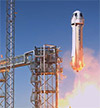From a policy perspective, the Plains States have a particularly friendly approach to business, according to a recent ranking by Chicago-based Pollina Corporate Real Estate. Its top 10 list of the most business-friendly states for 2015 had Nebraska in second place, Kansas fifth, and North Dakota sixth, with South Dakota in the 16th slot. Nebraska and Kansas, in particular, demonstrated a “winning combination of labor, taxes, and low-cost business environment as well as outstanding economic development programs,” according to the firm’s report.
Forbes is also high on the region. Its 2015 Best and Worst States for Business evaluation puts Nebraska as third-best, North Dakota fourth, and South Dakota ninth. And Kansas was a top-10 performer in Thumbtack’s 2015 Small Business Friendliness Survey. The state boasted an A ranking, up from a B the year before, and its tax code pulled in an A+.
Driving these kinds of rankings are business-friendly incentive programs and tax structures. Kansas, for example, enacted a series of business tax reforms in the past couple of years that have dramatically cut the tax burden. The reforms reduced the number of tax brackets, while also lowering the rates.
Technology and E-Commerce
The region’s welcoming environment has spurred the growth of a variety of sectors, not the least of which is technology and e-commerce. Some might expect more densely populated areas to have a tech advantage, but the Plains States are working diligently to counter that impression. For example, North Dakota has one of the nation’s lowest population densities, yet 95 percent of that population can plug into broadband services, and there’s one region of the state that boasts 100 percent fiber. South Dakota, meanwhile, offers a Certified Technology Park program to drive tech-focused business development.
Tech sectors are growing across Nebraska, too. In Lincoln, for example, recent expansion announcements include the e-commerce firm Spreetail, moving into space at the Nebraska Innovation Campus, and Hudl, a sports video software firm that’s building a new headquarters and adding as many as 300 new high-tech jobs.
North Dakota is putting propellers on its technology sector, working hard to become a leader in the high-growth drone business. The 217-acre Grand Sky business park at Grand Forks Air Force Base claims to be the nation’s first operations-ready business and aviation park focused on unmanned aerial systems, or UAS. Northrop Grumman recently broke ground on a UAS facility there, while General Atomics Aeronautical Systems broke ground for a training academy.
Meanwhile, Kansas played host to a UAS industry summit at the National Center for Aviation Training in Wichita, a logical choice given its strong cluster of aircraft manufacturers and suppliers — it’s an area that refers to itself as the “Air Capital of the World.” The state’s overall aerospace cluster continues to grow, too. Figeac-Aéro recently broke ground for new North American headquarters and a manufacturing expansion in Wichita. It’s a French company that supplies the likes of Airbus, Bombardier, Embraer, and others. Its manufacturing expansion is worth $20 million and about 200 new jobs. The state also announced a re-stated Workforce Services Training Agreement with Textron Aviation. The company employs more than 9,000 Kansans, and the agreement is intended to support hundreds of millions of dollars in product development and production investments.
It’s not all aviation in Kansas, though. Closer to the ground, turf care product manufacturer Excel Industries recently announced plans for a facility in Edgerton, with 200 jobs in the works. And Lawrence is the site of a new call and support center planned by USA 800; it promises 333 new jobs.
South Dakota has been chalking up wins for its manufacturing sector in recent months. For example, Glacial Lakes Rubber and Plastics is expanding in Watertown and adding jobs, Lehigh Defense picked Rapid City for a firearms components facility, and Polaris Industries will be painting motorcycles and hiring workers in Spearfish.
Renewable Energy
The Plains States continue to be well suited for renewable energy installation. New wind generation capacity has vaulted Kansas to sixth place nationally, up from ninth, according to the American Wind Energy Association’s latest market report, and North Dakota comes in 11th. South Dakota and Nebraska are also high on the list of wind-power producers. By a different measure, North Dakota claims national leadership in the field of wind power, with more than 17 percent of its electricity generated last year coming from wind.
Beyond wind, it’s a powerful region for energy production in general. North Dakota, for example, has grown to become the nation’s No. 2 oil producer. The energy sector is among the drivers keeping jobless rates low in this region — 2.8 percent in North Dakota in September 2015, 2.9 percent in Nebraska, 3.5 percent in South Dakota, and 4.4 percent in Kansas.
Regional Report: The Plains States Rank High for Business Friendliness
Already a powerful region for energy production, the Plains States are luring technology firms with their low taxes and other pro-business policies.
Directory 2016
Project Announcements
EPC-Columbia Plans Fremont, Ohio, Manufacturing Operations
11/05/2025
Aclara Resources Plans Calcasieu Parish, Louisiana, Heavy Rare Earth Separation Operations
11/04/2025
KCG Engineering Group Plans Chesapeake, Virginia, Operations
11/04/2025
Morin Establishes Little Rock, Arkansas, Operations
11/03/2025
Provalus Plans West Plains, Missouri, Operations
11/01/2025
Eos Energy Enterprises Expands Allegheny County, Pennsylvania, Operations
11/01/2025
Most Read
-
2025’s Top States for Business: How the Winners Are Outpacing the Rest
Q3 2025
-
The Compliance Reckoning Is Here
Q3 2025
-
Around the Horn: Data Center Supply Chains — What's Next?
Q3 2025
-
How Consumer Trends Are Reshaping Food Facilities
Q3 2025
-
First Person: Filter King’s Expansion Playbook
Q3 2025
-
Rethinking Auto Site Strategy in the Age of Tariffs and Powertrain Shifts
Q3 2025
-
Lead with Facts, Land the Deal
Q3 2025



